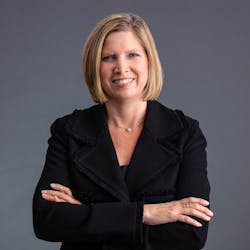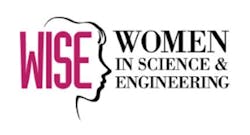Powertrain manufacturer Cummins Inc. recently announced Jennifer Rumsey as the company's new president and CEO. She is the first woman to hold this position with the company and it got me thinking about the future of the engineering and manufacturing workforce—a subject that is certainly not new but growing in importance.
Seeing a woman like Rumsey elevated to such a high-level position is great from this writer's perspective, particularly in an industry where women continue to not be as highly represented. There has certainly been great progress made in recent years, and there are plenty of initiatives out there aimed at improving the diversity of those working in the fields of engineering and manufacturing.
But we're also still at a place where it is noteworthy when a woman or other minority achieves something like this. And I'm always torn on this because on the one hand I want us celebrating the fact there are women or others making such achievements, but at the same time get to a place where it is not noteworthy and it is just a person who is qualified and elevated to a high-level position.
Rumsey has spent the majority of her career at Cummins starting on the Research and Technology side of things, and has held positions with increasing responsibility. She has helped with a variety of OEM partnerships and technology developments, including those for lower emissions products and helping lay the foundation for Cummins' New Power Business focused on battery and fuel cell technologies.The fact she has spent so much of her career at Cummins and been able to grow with the company demonstrates not only the value seen in her skills but also the company's dedication to building up in-house talent.
The latter is an important factor when it comes to creating, and keeping, a workforce. Employees want to know they are valued and have the opportunity to advance their career at a company. With the Great Resignation that has taken place over this past year, that has become increasingly apparent. And companies which do not recognize this and take action will likely be left behind.
Attracting Talent Remains a Challenge
Every industry is struggling today to find workers. Manufacturing and engineering, including the fluid power sector, are among those especially feeling the impacts of current workforce challenges. In particular, the ability to attract younger generations into the industry. Again, this is not a new topic or challenge but it is becoming an increasingly important one as many currently in these fields are reaching retirement age and leaving the workforcetaking with them their years of industry expertise.
Manufacturing and some engineering fields are not always seen as attractive ones to work in whether that be because they are viewed as dirty, "uncool" or not paying enough. All of which is of course untrue as those working in these industries understand.
So how do we go about attracting people into the engineering and manufacturing industries? That continues to be the million dollar question, and a discussion I've had many times over the years with people in or related to the industry.
The subject came up recently while attending a media event. Several of us were talking at dinner about how we can attract younger generations in particular in to the fluid power and related markets. None of us had a solution, but among the suggestions were finding ways to demonstrate what the industry does and why it is just as exciting as other engineering fields. There are of course some programs out there which do this, like FIRST Robotics or efforts put forth by the National Fluid Power Association (NFPA) such as its Fluid Power Vehicle Challenge — a competition for college students in which they apply fluid power technology to new bicycle designs.
One aspect that comes up again and again is the need to bring more diversity into the engineering and manufacturing space by attracting women and people of color, in addition to younger generations. Not only will this help to fill the workforce gap but also bring new ideas and talent into the industry and of course aid the economy by providing good jobs to people.
But again, how do we attract more diversity? Establishing programs which conduct outreach of various types to attract new talent or demonstrate what is going on within the industry are among the ways this can, and is being done. The Association of Equipment Manufacturers (AEM) recently wrote about the importance of getting involved with community outreach programs to help with development of the future workforce. Industry members who can get involved with organizations or events which help promote STEM (Science, Technology, Education and Mathematics) can be a great way to help encourage people to become part of the industry and share their own experiences within it.
Outreach to politicians to support programs which will help get people into careers or just support the industry in general can also be beneficial. Recently, HydraForce and the AEM held an event in which they hosted United States Representative Brad Schneider (D-IL) at HydraForce's facility in Illinois. It provided Schneider a chance to see the facility as well as talk with employees about the manufacturing industry which he and many other politicians are looking to help bolster in the U.S. through various legislation. Improving U.S. manufacturing is also an important initiative of the Biden-Harris administration.
Shining a light on people like Rumsey achieving a high-level position at a large, global company like Cummins can benefit as well by demonstrating to other women and minorities that engineering and manufacturing can be a career option.
Visit the Women in Science and Engineering (WISE) hub hosted by our colleagues at Machine Design which compiles coverage of gender representation issues affecting the engineering field, in addition to contributions from equity seeking groups and subject matter experts within various subdisciplines.
So what will the future of the engineering and manufacturing workforce look like? That remains to be seen, but in this humble author's opinion the more we can demonstrate what the industry does and those working in it, like Rumsey, the better the chances of attracting new talent into it and shaping what could be a more inclusive workforce.
We want to hear from you!
What do you think needs to be done to help attract more people to the industry? What programs do you find good at doing so, and could they be adapted to the fluid power and other related industries? Let us know!
Editor’s Note: Power & Motion's Women in Science and Engineering (WISE) hub compiles our coverage of gender representation issues affecting the engineering field, in addition to contributions from equity seeking groups and subject matter experts within various subdisciplines.





